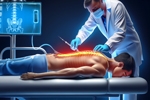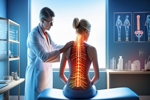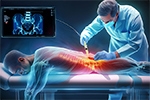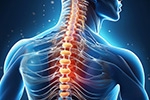Home »
Blog » Back Pain
| Stem Cell, PRP, Acupuncture in Queens & Long Island, New York
Back Pain | Stem Cell, PRP, Acupuncture in Queens & Long Island, New York
Tags: Back Pain | Posted on: 17-Feb-2025 | No of views: 799 Chronic pain and sleep disturbances often form a vicious cycle, where inadequate rest worsens pain, and pain disrupts sleep. This condition, known as “painsomnia,” can severely affect physical and mental well-being. At Precision Pain Care and Rehabilitation, we focus on managing painsomnia with techniques like relaxation therapy, sleep hygiene optimization, and interventional pain treatments. Our goal is to improve your sleep quality and break the pain-sleep cycle for better overall health.
Read more
Tags: Back Pain | Posted on: 14-Feb-2025 | No of views: 806 Radiofrequency ablation (RFA) is a minimally invasive procedure designed to disrupt pain signals at their source, offering long-term relief for conditions like arthritis, facet joint pain, and sacroiliac joint pain. Learn how this effective treatment can help you regain control and improve your daily life when other methods have failed.
Read more
Tags: Back Pain | Posted on: 12-Feb-2025 | No of views: 806 Spinal stenosis is a condition where the spinal canal narrows, putting pressure on nerves and causing pain, numbness, or weakness. Common in older adults, it often affects the lower back or neck. At Precision Pain Care and Rehabilitation, we use interventional pain management techniques like epidural steroid injections, radiofrequency ablation, and spinal cord stimulation to relieve symptoms. Our goal is to improve mobility and quality of life without surgery.
Read more
Tags: Back Pain | Posted on: 10-Feb-2025 | No of views: 992 Struggling with persistent back pain? Physical therapy can help relieve pain, restore mobility, and prevent future discomfort. Through targeted treatments like core-strengthening exercises, manual therapy, and advanced modalities such as ultrasound and electrostimulation, you can regain strength and improve posture. With the right approach, long-term relief is possible—helping you stay active and pain-free in daily life.
Read more
Tags: Back Pain | Posted on: 07-Feb-2025 | No of views: 892 For many individuals suffering from chronic back pain, surgery is often considered a last resort. Fortunately, epidural steroid injections (ESIs) offer a non-surgical approach to pain relief by reducing inflammation around the spinal cord and nerves. These injections provide temporary relief but, when combined with therapeutic exercises, may help delay or even eliminate the need for surgery.
Read more
Tags: Back Pain | Posted on: 05-Feb-2025 | No of views: 1293 Back pain is a leading cause of disability worldwide, affecting individuals of all ages and lifestyles. While often manageable, its impact on daily life underscores the importance of informed, evidence-based care. This guide outlines the causes, diagnostic approaches, and treatment strategies to help patients better understand their condition and collaborate effectively with healthcare providers.
Read more
Tags: Back Pain | Posted on: 13-Nov-2024 | No of views: 1342 Low back pain is one of the most common conditions affecting adults worldwide, contributing to reduced mobility, decreased quality of life, and lost productivity. For many, persistent pain can make daily tasks feel insurmountable but effective treatment options are available. At Precision Pain Care and Rehabilitation, interventional pain management offers relief for those struggling with low back pain, allowing them to return to a more active and pain-free life.
Read more
Tags: Back Pain | Posted on: 06-Nov-2024 | No of views: 1277 Lumbar radiculopathy, commonly known as sciatica, affects millions of individuals, causing pain, tingling, or numbness radiating from the lower back down to the legs. This often debilitating condition arises when nerve roots in the lumbar spine (lower back) become compressed or irritated, usually from issues like herniated discs, bone spurs, or degenerative disc disease.
Read more
Tags: Back Pain | Posted on: 04-Nov-2024 | No of views: 1282 For many patients, spinal surgery, such as a laminectomy, offers the promise of relief from chronic back or leg pain. However, in some cases, pain persists or even worsens after surgery—a condition known as Post Laminectomy Syndrome (PLS). This complex syndrome can be both physically and emotionally challenging for those who anticipated a return to a pain-free life. Interventional Pain Management offers a range of solutions to help these individuals manage their discomfort and improve their quality of life.
Read more
Tags: Back Pain | Posted on: 01-Nov-2024 | No of views: 1420 Facet Joint Syndrome is a common but often underdiagnosed cause of neck and back pain that can significantly affect quality of life. At Precision Pain Care and Rehabilitation, we specialize in managing this condition through advanced interventional pain management techniques. Here, we’ll explore Facet Joint Syndrome, its symptoms, causes, and innovative treatment options that can help patients find relief.
Read more
Love this Post? Spread the World
























